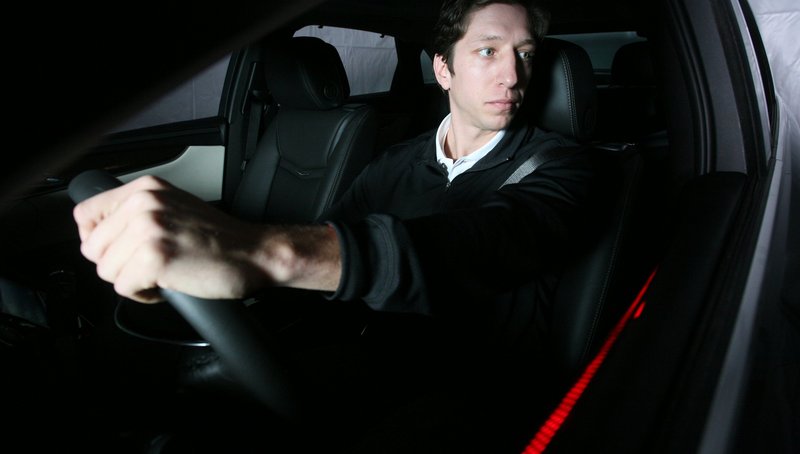Continental puts on intuitive dialogue between driver and vehicle
- At Automotive News World Congress, the attractiveness of future vehicle generations is discussed
- Continental focuses on an holistic human-machine interface (HMI) approach
- An ever increasing number of safety and comfort features in the vehicle makes it all the more important to inform the driver about what their vehicle is “doing”
Detroit, Michigan/USA, January 15, 2014. The international automotive supplier Continental is developing future-proof human-machine interface (HMI) concepts and instrumentation for vehicle manufacturers worldwide. The company is increasingly focusing on a holistic systems approach. "Drivers should be able to intuitively receive the information they need to know while driving. It's about a dialogue without words. The vehicle is to anticipate what the driver needs in the current driving situation," said Helmut Matschi, Member of the Executive Board of Continental and head of the Interior Division, during the Automotive News World Congress in Detroit.
Based on these expectations of future operating models for vehicles, Continental has shown its approach to solve future challenges in the area of the human-machine interface (HMI) in Detroit. On top of a general increase in vehicle functions, future HMI concepts also have to address oncoming trends such as partially, highly or fully automated driving. “New automated driving functions require a next evolutionary step in the field of the dialogue between the driver and the vehicle”, stated Helmut Matschi. “As driver assistance technology further develops towards automated driving, the HMI has to meet new requirements”, Matschi explained to the expert audience in Detroit. “In contrast to the static HMI of the past, the vehicles of the future have to offer a holistic HMI. The vehicle should always be ready to serve the driver. This is why the HMI has to flexibly adapt to the traffic situation and also to the driver’s momentary status. ” Those situations have to be operated in a reasonable manner, when the transition takes place between the driver and the automated driving functionalities.
The holistic human-machine interface
This holistic approach is what Continental is working on. Interior cameras are playing an important role for this. They will help to close the information loop between the driver, the vehicle and vehicle’s environment. This will particularly become more important with automated driving functions. On the one hand they need to be activated easily. On the other hand, the handover back to the driver must take place intuitively. Therefore the HMI has to offer ways to bring back the drivers attention on the actual driving situation. But then, what if the driver is not paying attention at all? What if he or she simply do not look where danger is imminent, or fall victim to momentary nodding? “In that kind of critical driving situation the HMI needs to adapt as well – like a ‘For-one-another-Technology’”, says Matschi. Interior cameras can observe the position of the driver’s head and the viewing angle. In a critical situation suitable signals guide the driver’s attention to where it is needed. In the Driver Focus demonstration vehicle by Continental this principle is exemplified by LED powered light strips, which are part of a larger concept that can also activate acoustic and haptic warnings, depending on the type of danger. “When we get to that point, the driver knows what his or her vehicle is doing, and the vehicle can respond to what the driver needs”, Matschi summarizes.
Seeing is believing – and trust building
Increasing traffic density and ever richer vehicle functionality make it more important to prioritize information. That is one of the core strengths of the head-up display (HUD): Depending on the driver status, it can shift instantaneously relevant information close to the driver’s field of vision where it is easily seen. Even with a typical driver assistance solution of today, for instance the adaptive cruise control, it is reassuring for the driver to see relevant information about the activated control function displayed in the HUD. “It takes an appropriate HMI for a driver to develop trust in totally new vehicle functions”, was already a core statement of Eelco Spoelder, head of the Instrumentation & Driver HMI business unit, during the VDI conference “The Driver in the 21st Century” in November 2013.
Heading to augmented reality in the head-up display
By using Digital Micromirror Device (DMD) technology for its third generation HUD, Continental has made the decisive step towards larger fields of vision and even more variable information contents in the HUD. By choosing DMD technology Continental has also laid the foundation for yet another new HUD generation: The augmented reality HUD (AR-HUD) makes it possible to overlay the real road view ahead with perfectly matching optical hints because the visible area of the AR-HUD extends right into the driver’s field of vision. So the information is displayed exactly where it is needed – in its immediate context.
Magically operated– from static HMIs to flexible HMIs
“By optimally interlinking HUD, cluster instrument, and center console we can always display exactly the bits of information that the driver needs in a particular driving situation”, says Spoelder. “This will become even more important in the future because the driver will change back and forth between steering the vehicle or simply monitoring it. This kind of role switch also changes the information the driver needs. Only by adapting to this change can the HMI ensure that the driver perceives efficiently and quickly what he is to do next.”




